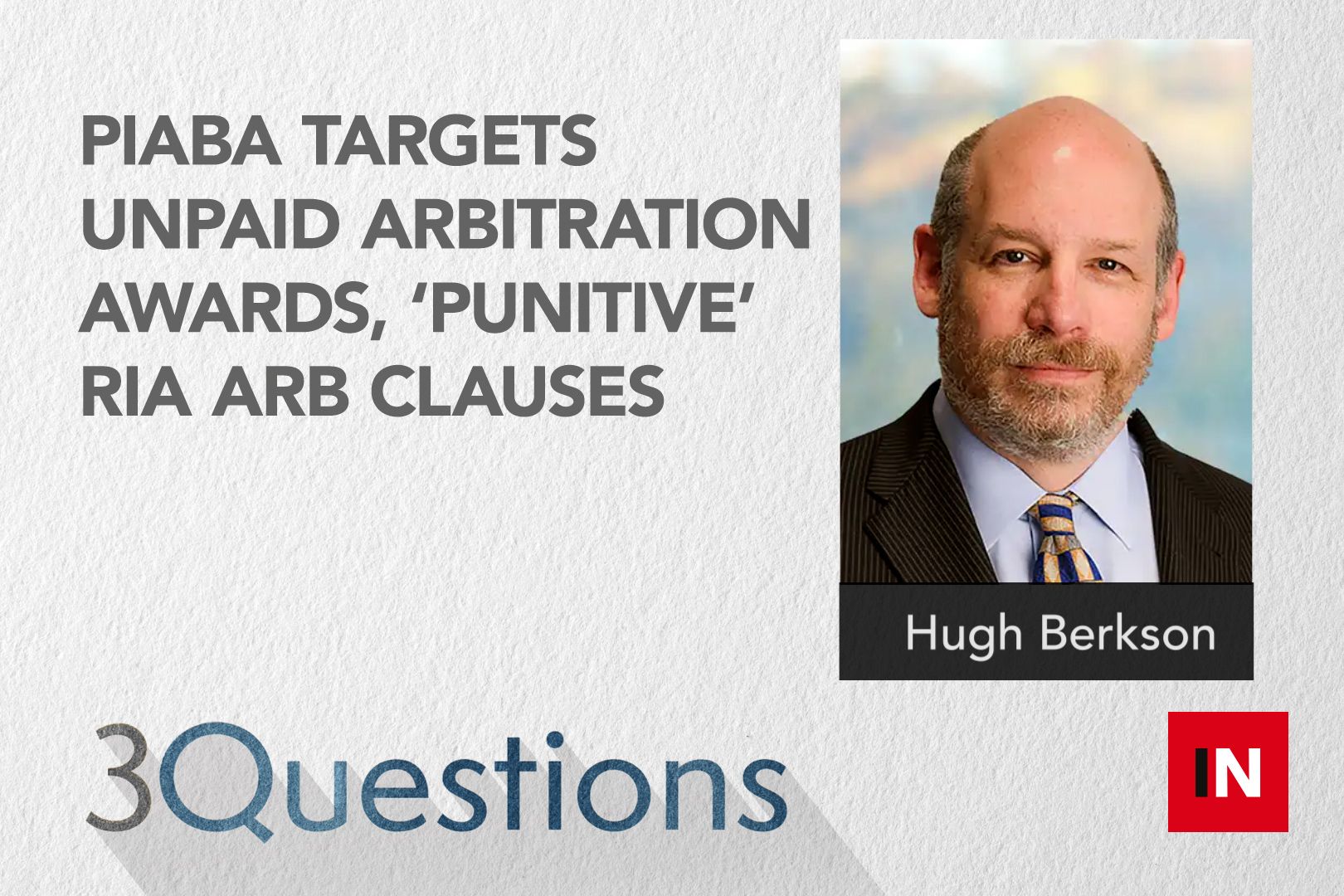Investing to eliminate gender-based violence
Gender-based violence around the world costs about $728 million a year in lost productivity, says Teresa Wells of Tiedemann Advisors, who outlines some approaches impact investors can use to combat that violence.
Liz Skinner [00:00:03] Up to Three Questions. I’m Liz Skinner with InvestmentNews, and with me today is Teresa Wells, managing director and partner at Tiedemann Advisors. Thanks for joining us, Teresa.
Teresa Wells [00:00:15] Thanks for having me.
Liz Skinner [00:00:16] Tell us what gender based violence is, which is something that you’ve done some writing and research on. And how widespread it really is as a global issue.
Teresa Wells [00:00:28] Well, I’ll use the State Department’s actual definition of gender based violence because it’s, I think, powerful and important to know that our own leadership sees it this way. They think of it as any harmful threat or act directed at any individual or group based on actual or perceived biological sex, gender identity and or expression, their sexual orientation or lack of adherence to varying social constructed norms around masculinity and femininity. Most importantly, though, they even see it as being rooted in the structural gender inequalities, patriarchy and power imbalances. So essentially, it’s against any women, girl or person who identifies as a woman or girl or person who doesn’t necessarily confined to any gender identity binary gender identity right now from, you know, how pervasive or widespread it is. Over thirty five percent of women all over the globe have been subject to physical or sexual violence at some point in time in their lifetime, and that figure doesn’t even account for all of the many, many women around the world who have been victim to sexual harassment. It’s truly just assault. Thirty five percent. So and it’s widespread, it’s every sector, every country, every race, every age, every income demographic, it is ubiquitous and pervasive. It’s really important to note, though, that it’s also very costly, so not just emotionally and the physical toll that it takes, but economically as well. So there’s great research indicating that the cost associated with lost productivity due to domestic violence is roughly seven hundred and twenty eight million dollars a year. Now, if you were to take that and evaluate that over each victim’s lifetime just here in the United States, that cost is somewhere around three trillion dollars. And that’s because of health care, lost productivity and wages, criminal justice costs and so on. $3 trillion dollars. So it’s a real problem.
Liz Skinner [00:02:44] That’s that’s incredible. And I understand that your firm has actually identified four different ways that investors can actually use their resources to help with this.
Teresa Wells [00:02:57] That’s right. So, you know, again, this is a really pervasive issue that permeates all corners of the planet, but it’s preventable. So one of the most important factors that we want to try to focus on in solving for gender based violence. This is this is actually grounded in research that came out of the United Nations, the European Commission, the World Bank and the World Health Organization, that it’s creating pathways for greater gender equity and empowerment globally. So a lot of times what we focus on is more representation, like how many women are in board or management seats, but that’s just one spoke of this. We are what we really need to focus on is true empowerment. So a lot of our work in impact investing has led us to these this framework on how we can apply an intention around solving for gender based violence through what we consider to be four main approaches of impact investing. So the first would be what we call values aligned. So this is more of a cleaver than a scalpel, but this is where we we screen our whole sectors, if you will, that are. And what we’ve done here is is focusing on those companies or those sectors where gender based violence is much more pronounced and where are the companies that have been found subject to controversy related to gender based violence? We just remove them entirely from the portfolio or conversely, what we do is we also see who are those best operators or some of the worst operators in a particular sector and then work with them through shareholder engagement, try to create change. So that’s one one approach. A second approach is what we call ESG integration. Now this is where we work with certain asset managers that are trying to make really informed active decisions about which companies should be in the portfolio by infusing thoughts around environmental, social and governance issues into their decision making. And what we want to do there is focus on those managers that apply a much deeper, much more rigorous, much more research approach on how to root out some of the fundamental causes of gender based violence, both within a company’s culture, possibly within their product line and even within their supply chains. So that’s another approach. The third approach is what we call thematic impact investing. So this is where we’re going to make private investments into various different impact themes that can generate both a positive impact outcome as well as a positive financial return. Now, as of today, unfortunately, there’s no specific fund, there’s no specific investment that’s purely focused on solving for gender based violence. But what we did in the paper is we actually spent more time focusing on those different impact strategies that are usually very popular with and impact investors. And then we apply a gender based violence lens to it. So here we’re asking those investors to recognize and realize that many of their positive environmental funds or their other, you know, many of the other funds that they have around social causes or financial inclusion oftentimes have unintended negative consequences related to gender based violence. So we want a name that we want to make sure people are aware of it and then empower them with a series of questions and data that they can go back to these fund managers with to try to reshape the way that the money is being moved in that way or redefine some of the terms. And then the last one, which is the most dear to my heart, is called catalytic investing. And this is really where we start with the question What’s the problem we want to solve? And what’s the right kind of capital to come in and fix it? And so here we just imagine for folks, what if we really wanted to create a new ecosystem around gender based violence solutions? How can we redefine some of the structures around blended finance or loan guarantees, public private partnerships in support of new investments in this way? Or how can we reimagine some of these companies that that can really help move the needle in terms of addressing gender based violence and, frankly, gender norms?
Liz Skinner [00:07:05] Could you walk us through an example of one of these investments?
Teresa Wells [00:07:11] We have different examples that go through the different approaches, but I’ll give a couple and a couple of approaches, so I’m on one. If we were to go in a values aligned realm, we could definitely screen out those sectors that have a disproportionately high rate of gender based violence. Interestingly enough, most of most impact investors, when they want to approach gender as their theory of change, we’ll just check a box to say, I want the gender focused companies. Unfortunately, what we found is that more often than not, that means gender representation. And in those industries with higher gender representation actually tend to have a higher rate of gender based violence. So what we did instead is offer these are those sectors that if you really wanted to try to remove gender based violence from your portfolio and not fund those companies instead, maybe focus on these areas. And that’s everything from agriculture to hospitality to health care. Or again, you could find the worst actors in those areas and pull people into a shareholder resolution to really try to engage that company’s management and create that cultural change. Inside of the world of catalytic, I’ll give more interesting ideas that we have there, this is where you can really re-imagine. We can change the narrative around gender based violence, much in the way that we’ve now changed the narrative around global climate change through really intentional media and documentaries and things like that. So investing in companies that are engaging in more media and entertainment specifically with the idea of highlighting this issue could really help in creating greater awareness around it. You could also invest in companies that are creating, you know, better safety apps, you know, financial technologies that allow for greater empowerment and safety around the use of money. Or, you know, those online resources that for women seeking safe and equitable employment. And I even name the company that’s doing that inside of the paper.
Liz Skinner [00:09:12] Teresa, thanks so much for joining us and opening our eyes to this sort of investing.
Teresa Wells [00:09:19] It was my pleasure. Thanks so much for having me.



